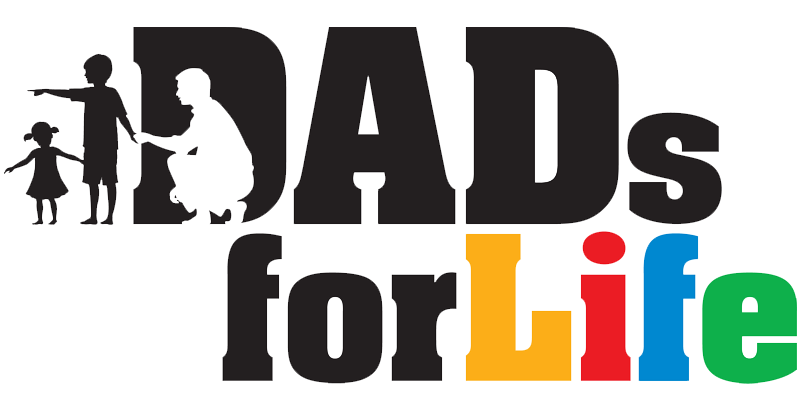The teenage stage
One of the central tasks for teenagers is to develop their personal identity. Teenagers spend more time away from their parents and with their peers, from whom they learn cues about what to do in order to both fit in and stand out. However, parents continue to have an important role and influence during the teenage years. How, specifically, do fathers matter to their teens?
Father-child bonds during the teenage years
Adolescence is often a time of increased conflict between children and their parents. However, there are differences between how teenage boys and girls experience their relationships with their mothers and with their fathers. Daughters and sons tend to have different views of their mothers’ and fathers’ parenting. Sons report more conflicts with their mothers than fathers about rules. However, sons also describe mothers as more supportive and communicative, while fathers are the ones who provide advice and with whom they spend more leisure time. Daughters report closer relationships with their mothers, and are more likely to view their fathers as authoritarian (Holmbeck, Piakoff, & Brooks-Gunn, 1995).
In general, research shows teenagers rely more upon their mothers for emotional support, and upon their fathers for conversation, advice, and just “being there” (Catan, Dennison & Coleman, 1997; O’Brien & Jones, 1996). Indeed, fathers appear to provide instrumental care such as providing tangible advice and transporting children to places, whereas mothers offer more intangible emotional care (Youniss & Smollar, 1985).
Unfortunately, some fathers seem to withdraw from their teenagers. Research has found that fathers tend to be less involved in parenting their adolescent children than are mothers, and teenagers report being more securely attached to their mothers (Williams & Kelly, 2005). This finding could be due to fathers’ concern for instilling independence in their children. Or, because father-child relationships tend to be interest- or activity-based, the distance during the teenage years could be due to the increased difficulty in finding common activities to bond over as teens seek the company of their peers.
Benefits of father involvement
Nonetheless, fathers absolutely matter, especially to their teens. Here’s why.
- Overall emotional wellbeing: Teenagers who feel closer to their fathers are less likely to engage in delinquent behaviour, to experience emotional distress (Harris & Morgan, 1991), and to display externalising and internalising symptoms such as acting out, disruptive behaviour, depression, sadness and lying (Flouri & Buchanan, 2002; Mosley & Thompson, 1995).
- Social and life skills: Teenagers who felt their fathers were available to them had fewer conflicts with their friends (Lieberman & Markiewica, 1999).
- Academic outcomes: A father’s academic support was positively related to adolescent boys’ academic motivation to try hard in school, to feel their grades were important, and to place a high value on education (Alfaro, Umana-Taylor, & Bamaca, 2006). Teenagers with involved fathers are also more likely to have positive attitudes toward school (Flouri & Buchanan & Bream, 2002).
- At risk behaviour and criminality: Fathers appear especially important in providing appropriate parental support and supervision during the turbulent teenage years. Teenagers who feel closer to their fathers, spend more time with them discussing personal problems, depend on them for advice and guidance, and receive more praise and encouragement from their fathers, are more likely to abstain from substances (Coombs & Landsverk, 1988).
Zimmerman et al (2000) found that father involvement when the youth was in 10th grade was associated with less problem behaviour, such as drug use, delinquency, and violent behaviour the next year, especially if the father provided school support. Father involvement has also been linked to less truancy and stealing (Barnes, 1984), and less drinking (Harris, Furstenberg, & Marmer, 1998).
The positive relationship between peer drug use and adolescent marijuana use is also disrupted by adolescents’ closeness to their fathers and the perception that their parents would catch them for major rule violations (Dorius, Bahr, Hoffmann, & Harmon, 2004).
For adolescents already engaging in rather high rates of delinquency at the baseline, higher rates of father involvement had a protective effect against criminality one to two years later (Coley & Medeiros, 2007).
- Future outcomes: Those who strongly identified with their fathers as teenagers are 80% less likely to be in jail as adults and 75% less likely to become unwed parents (Furstenberg & Harris, 1993).
Conclusion
The research underscores the importance that fathers see the teenage years as a time to step up rather than withdraw from fathering – whether it is in improving father-child communication, in understanding what makes teens tick, or in adjusting their roles to maintain common spaces, activities and interests.
Works Cited:
- Alfaro, E. C., Umana-Taylor, A J., & Bamaca, M. Y. (2006). The influence of academic support on Latino adolescents’ academic motivation. Family Relations, 55 (3), 279-291.
- Barnes, G. M. (1984). Adolescent alcohol abuse and other problem behaviours: Their relationships and common parental influences. Journal of Youth and Adolescence, 13, 329-348.
- Catan, L., Dennison, C. & Coleman, J. (1997). Getting through: Effective commmunication in the teenage years, London: Trust for the Study of Adolescence & the BT Forum.
- Coley, R.L., & Medeiros, B.L. (2007). Reciprocal longitudinal relations between nonresident father involvement and adolescent delinquency. Child Development, 78, 132-147.
- Coombs, R. H., & Landsverk, J. (1988). Parenting styles and substance use during childhood and adolescence. Journal of Marriage and the Family, 50, 473-482.
- Dorius, C. J., Bahr, S. J., Hoffmann, J. P., & Harmon, E. L. (2004). Parenting practices as moderators of the relationship between peers and adolescent marijuana use. Journal of Marriage and Family, 66, 163-178.
- Flouri, E., & Buchanan, A. (2002). Life satisfaction in teenage boys: The moderating role of father involvement and bullying.Aggressive Behavior, 28,126-133
- Flouri, E., Buchanan, A., & Bream, V. (2002). Adolescents’ perceptions of their fathers’ involvement: Significance to school attitudes. Psychology in the Schools, 39(5), 575-582.
- Furstenberg, F. F., & Harris, K. M. (1993). When and why fathers matter: Impacts
- of father involvement on the children of adolescent mothers. In R. I. Lerman & T. J. Ooms (Eds.), Young Unwed Fathers: Changing Roles and Emerging Policies (pp. 117-138). Philadelphia: Temple University Press.
- Harris, K. M., Furstenberg, F. F., & Marmer, J. K. (1998). Paternal involvement with adolescents in intact families: The influence of fathers over the life course. Demography, 35 (2), 201-216.
- Harris, K. M., & Morgan, S. P. (1991). Fathers, sons, and daughters: Differential paternal involvement in parenting. Journal of Marriage and the Family, 53, 531-544.
- Holmbeck, G. N., Piakoff, R. L., & Brooks-Gunn, J. (1995). Parenting adolescents. In M. H. Bornstein (Ed.), Handbook of parenting, Vol. 1 (pp. 91–118). Mahwah, NJ: Lauwrence Erlbaum.
- Lieberman, M., Doyle, A.B. & Markiewica, D. (1999). Developmental patterns in security of attachment to mother and father in late childhood and early adolescence: Associations with peer relations. Child Development, 70, pp. 202-213.
- Mosley, J., & Thompson, E. (1995). Fathering behavior and child outcomes: The role of race and poverty. In W. Marsiglio (Ed.),Fatherhood: Contemporary theory, research, and social policy (pp. 148-165). Thousand Oaks, CA: Sage.
- O’Brien, M. & Jones, D. (1996). The absence and presence of fathers: Accounts from children’s diaries,” in Bjornberg, U. & Kollind, A-K. (eds.), Men’s Family Relations, Gothenburg: University of Goteborg Publications.
- Williams, S. & Kelly, D. (2005). Relationships among involvement, attachment, and behavioral problems in adolescence: Examining father’s influence. Journal of Early Adolescence, 25(2), 168-196.
- Youniss, J., & Smollar, J. (1985). Adolescent relations with mothers, fathers, and friends. Chicago: University of Chicago Press.
- Zimmerman, M. A., Salem, D. A., & Notaro, P. C. (2000). Make room for daddy II: The positive effects of fathers’ role in adolescent development. In R. D. Taylor & M. C. Wang, et al. (Eds.), Resilience across Contexts: Family, Work, Culture, and Community. Mahwah, NJ: Lawrence Erlbaum Associates, Inc.
About the Author: The Dads for Life Resource Team comprises local content writers and experts, including psychologists,counsellors, educators and social service professionals, dedicated to developing useful resources for dads.
First published on 09-11-2012.
